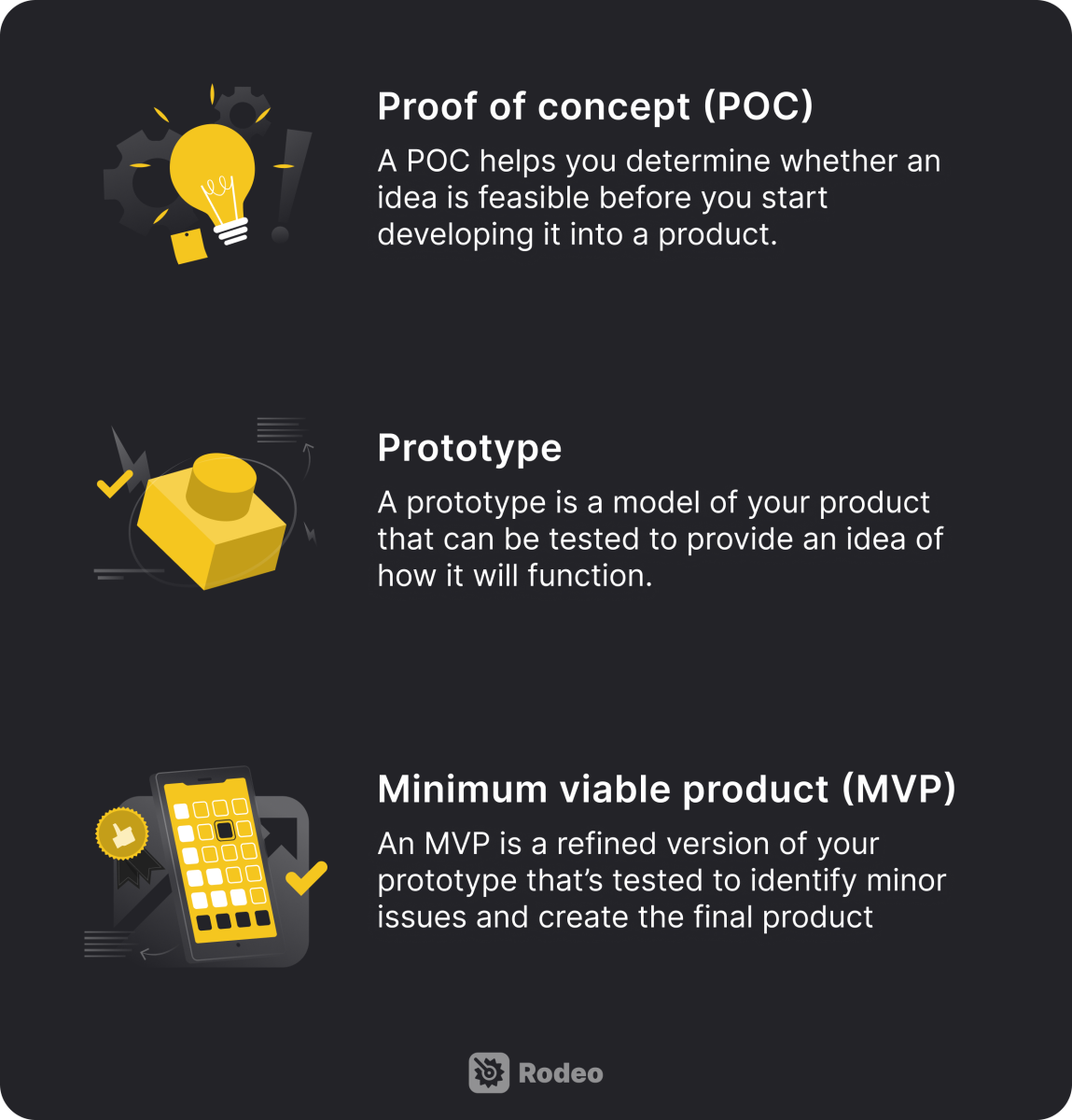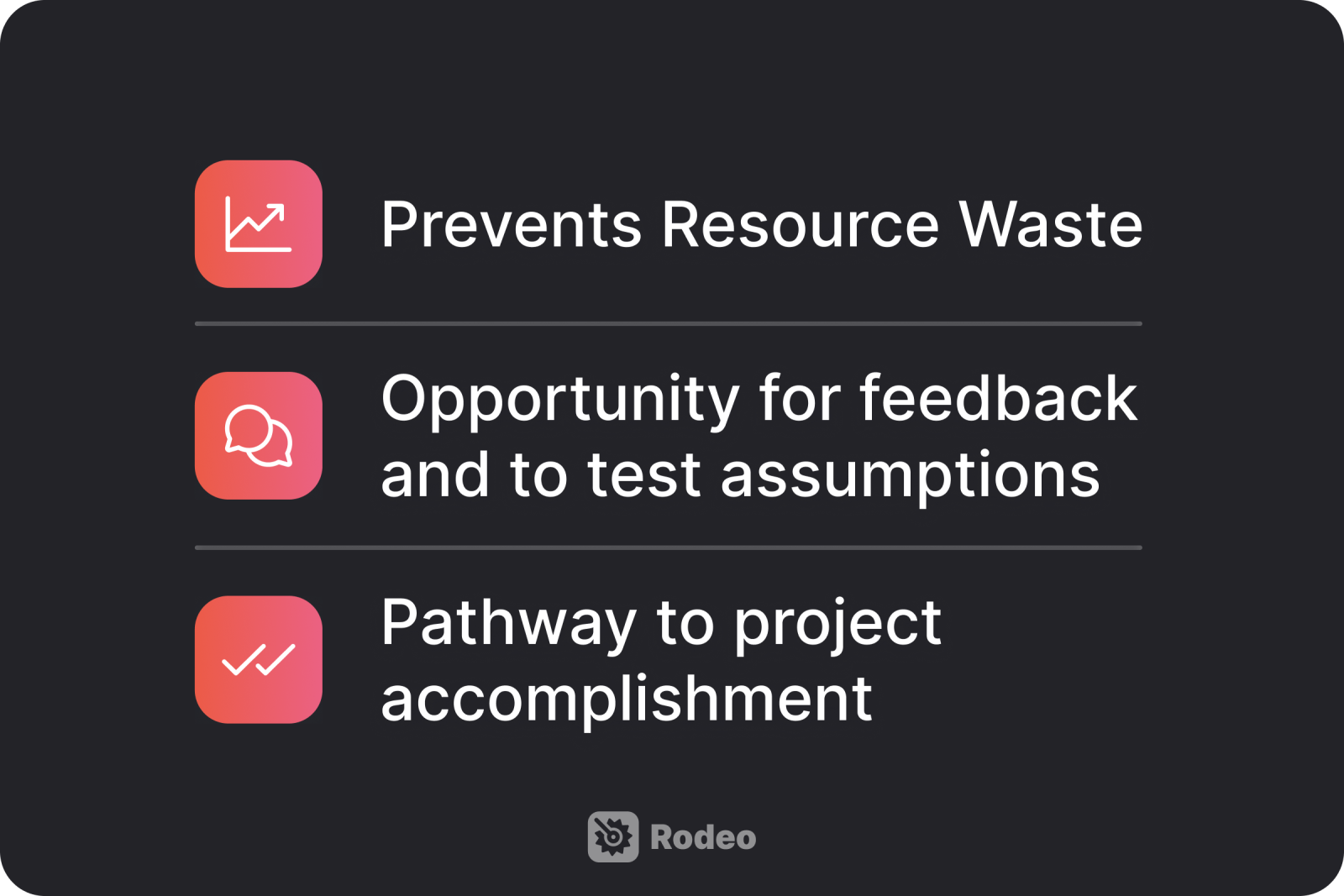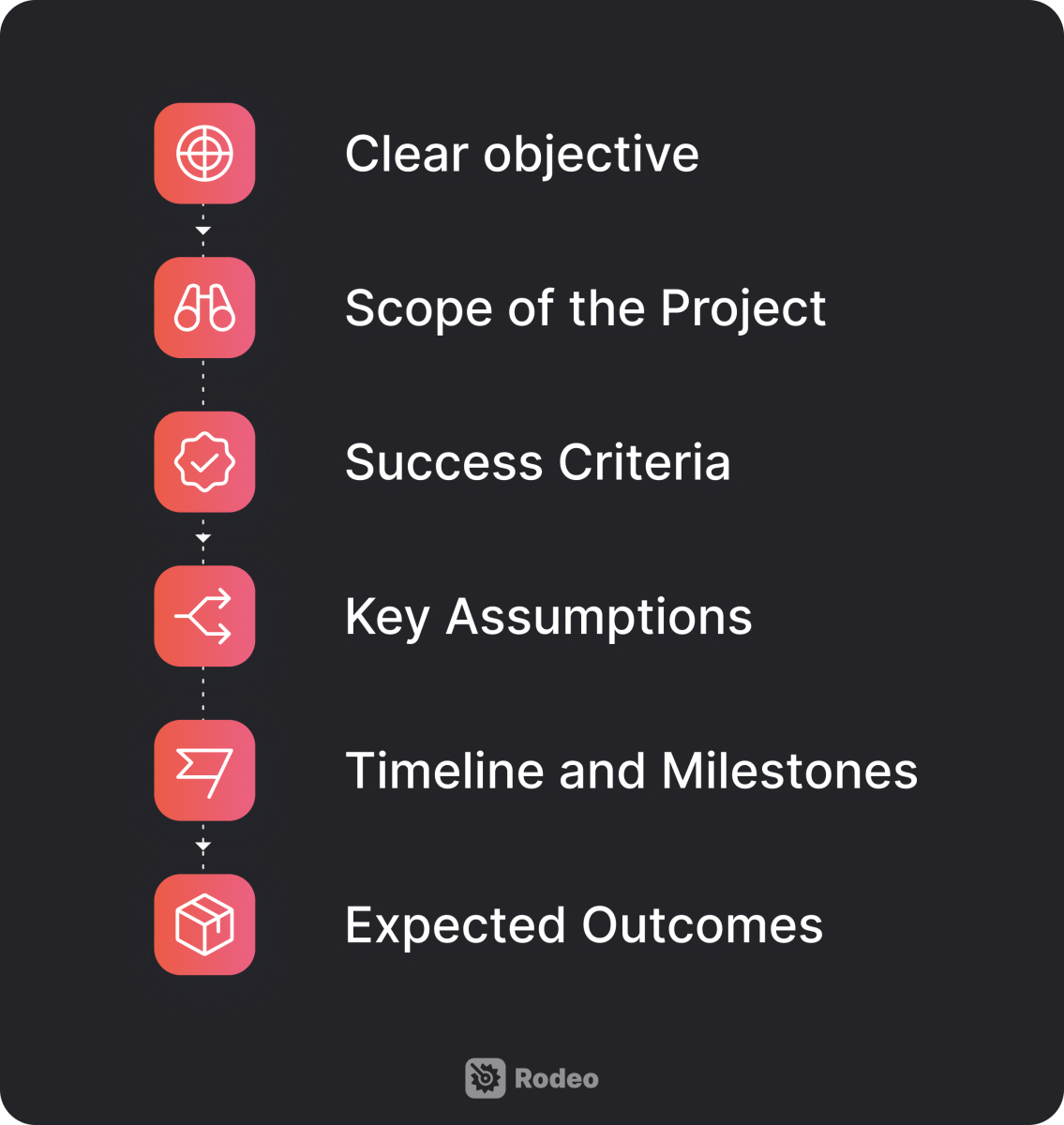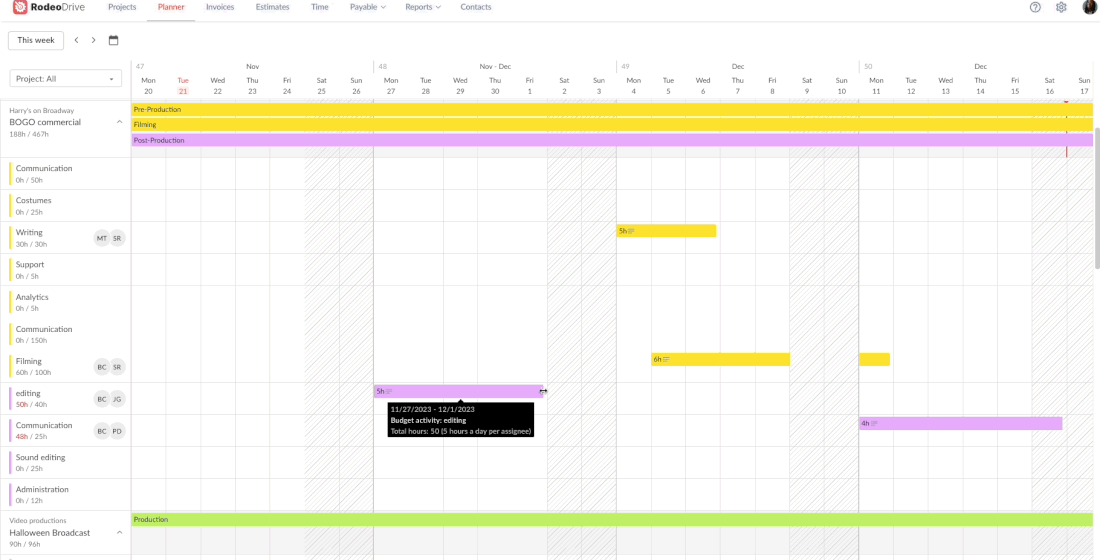What Is a Proof of Concept and How to Write One for Successful Projects
Successful projects and businesses always start from an idea. The catch? So do unsuccessful ones.
Creating a proof of concept can help you land more ideas in the first category. A proof of concept is a way to test ideas in low stakes before implementing them at scale.
In this article, we’ll share how you can write one, along with an example case study at the end to demonstrate what one looks like in practice.
What is a proof of concept?

A proof of concept (PoC) is an evidence-gathering process that shows whether an idea is viable. It stress-tests assumptions so that decision-makers can make an informed choice on whether a project plan should proceed. It saves both time and resources and eliminates ambiguity.
By starting with a proof of concept, companies can explore the validity of ideas before committing serious resources. This is helpful for innovation-driven projects where the outcome is uncertain.
Be it software development, launching a new physical product, or implementing a new business model, a proof of concept gives clarity over whether the vision is feasible.
Related: How to Increase Creativity in the Workplace: Proven Techniques and Strategies
Proof of concept vs. prototype
You may be thinking, “That sounds a lot like a prototype or MVP.” And while there are similarities between those and a proof of concept, there are important distinctions.
A prototype is a bare-bones model of the product that shows how it would look in the real world. It’s usually made after the proof of concept and is more tangible.
Their purpose is slightly different too. A proof of concept demonstrates whether a concept ‘should’ be made, while a prototype shows ‘how’ it is made.
So, the two can work together when validating an idea. But it’s a good idea to start with a proof of concept, then move to a prototype after since building a prototype requires investment, and might not tell you whether the product is worth creating in the first place.
Proof of concept vs. minimum viable product
A minimum viable product (MVP) is a significant enough prototype for real-world users to implement. It has more stripped-back functionality than the final design, but it has enough of its core features to gather meaningful feedback from its target market.
User engagement separates an MVP from a prototype or proof of concept. The latter two are typically used for internal validation, while an MVP is usually the first opportunity for a product to be tested in an uncontrolled environment.
The MVP helps companies understand how their target audience uses the product and perceives its value. This is called customer validation. It’s common for companies to iterate on the product or pivot altogether based on customer validation until the idea is refined enough to achieve product-market fit.
When to use a proof of concept
Now that you know what differentiates a proof of concept from an MVP and prototype, you might be wondering when you should use a PoC. Here are some common situations where starting from a proof of concept is a good call.
If the project is resource-intensive
A PoC is invaluable for long, resource-intensive projects. If a project idea uses team members for an extended amount of time, it makes sense to vet whether that project will offer sufficient value in return. After all, the people you commit could be allocated to other projects.
In such cases, a PoC can measure whether project goals are clear and achievable before you invest in them. It can also identify potential roadblocks beforehand, allowing for adjustments and better strategic planning.
When there is risk involved
Risk is an inherent part of projects. A proof of concept can help mitigate risk. In projects where risk is particularly high — say involving untested technology or venturing into an unexplored market — a PoC can test core assumptions to make sure they are sound before proceeding.
A startup looking to develop a new type of windmill, for example, faces a multitude of risks.
The first is technical feasibility and the second is market acceptance. That startup could use a PoC to test its assumptions that A: the windmill is technically possible to develop, and B: that there is a market that would purchase the new windmills over existing options on the market.
This eliminates the risk that the startup begins the project and then runs into a scenario where they’re stuck on development because of unforeseen technical challenges, or a scenario where they finish building the technology after spending significant financial resources, but can’t find any buyers.
Once a concept is proven with a PoC, project leaders can proceed with confidence, knowing risks are accounted for.
If there are external stakeholders, like investors
Investors seek assurance that their funds are used on viable ideas. A PoC demonstrates that an idea is sound and that the project team is capable of delivering on its promises.
In situations where large sums of money are at stake, like venture-backed startups, that can be the deciding factor in securing additional funding or buy-in from existing investors.
Benefits of creating a proof of concept for projects

We’ve addressed when to create a proof of concept. Before getting into the writing process, let’s go over a summary of its benefits.
Prevents resource waste
Time, manpower, and project budgets are finite. Long-term projects demand all of them in large measure.
Proving that those project ideas are viable before committing finite resources to them is invaluable. It prevents time and people — your most costly assets, from being engaged in initiatives that don’t have a well-defined path to success.
Opportunity for feedback and to test assumptions
A proof of concept offers a platform for internal feedback and to test assumptions. This is helpful for consensus-building within an organization. By asking for different perspectives, people can apply their different expertise to evaluate the feasibility of the concept.
This way, If certain assumptions don’t stand up to scrutiny, they can be identified and changed for the better.
Getting feedback from domain experts throughout your organization will also give you a better understanding of the real-world logistics needed to make the concept a reality. This allows for more concrete, realistic planning.
Pathway to project accomplishment
A well-executed proof of concept aligns project goals with practical considerations. It’s a roadmap that shows that it is feasible to take the idea from concept to implementation.
Demonstrating the viability of an idea is a confidence booster. It builds a strong case for the project, thereby securing buy-in from all involved parties.
What should a good proof of concept statement include?

A proof of concept will look different depending on the nature of the project. But here are some general guidelines for project managers who are tasked with writing one:
- Clear objective: Your PoC statement should begin with a concise objective. This defines what the PoC aims to demonstrate. For instance, “The PoC will validate the feasibility of integrating blockchain in our supply chain.”
- Scope of the project: Detail the scope of your PoC. Outline the boundaries of the project and areas of limitation. This helps focus resources on what’s most important.
- Success criteria: Define what success looks like for your PoC. These criteria should be measurable and achievable, providing clear targets to aim for.
- Key assumptions: List the assumptions under which the PoC will operate. This might include resource assumptions or those about your ideal customer profile.
- Timeline and milestones: Provide a realistic timeline for the PoC. Include key milestones. This keeps the project on track and ensures timely completion.
- Expected outcomes: Briefly describe what the PoC hopes to provide. This sets the stage for what comes after, be it further development of the idea or reevaluation.
How to write a proof of concept in 5 steps
Now that we’ve looked at what should go into your proof of concept statement, let’s take a look at 5 steps to follow to create a PoC of your own.
Step 1. Identify the problem or need
First, define the problem or need your proof of concept is addressing. Summarize the challenges or opportunities your project aims to tackle. A problem statement is helpful here, as it will set the direction for your proof of concept.
Step 2. Define success criteria and objectives
Next, establish what successful completion of the PoC looks like. Use specific, measurable objectives aligned with the overall goals of the project. Looking into other goal-setting frameworks may be helpful during this step. If the proof of concept requires coordination, building out a roadmap with a project planning tool will help collaborators get on the same page.
Step 3. Gather and analyze evidence
Perform experiments and gather the necessary data for your proof of concept. This step involves the actual testing and subsequent analysis required to validate your assumptions.
Step 4. Present findings to stakeholders
Once you have gathered and analyzed the evidence, compile and present your findings to the stakeholders. Do this in a clear, simple manner, highlighting the most key results and how they impact the project.
Step 5. Plan for the next steps
Based on the outcomes of the PoC, plan the next steps. This may involve moving forward to a prototype or minimum viable product if the PoC is successful, or revisiting the drawing board if it’s not. It’s important to have a path forward, regardless of the results.
Example proof of concept application
Expanding on how to write a proof of concept, let’s look at an example of how this might look in a case study.
Product development example
Let’s consider a company aiming to develop new, eco-friendly packaging. Their goal is to make packaging that is both biodegradable and durable enough to compete with traditional materials.
Step 1: Define the objective
First, they need to define the problem. In this case, it would be that current packaging on the market is not environmentally friendly. And if materials do happen to be environmentally friendly, they break down easily, so they don’t meet consumer expectations.
The PoC’s objective would be to determine whether a new material can be created that meets the higher standard for durability and environmental friendliness the company is aiming for.
Step 2: Research and develop
In the research phase, the company looks into different biodegradable materials and natural fibers. The team finds solutions that are already on the market and conducts small-scale experiments with blends to find a balance between environmental friendliness and durability.
Step 3: Feasibility testing
In this step, the project team subjects the materials to rigorous testing. They’ll conduct stress tests to evaluate durability under various conditions and biodegradability tests. They might also analyze production costs to see whether it’s truly possible to bring the solution to market.
After this step is completed, the company will have some initial ideas on if their current solution can solve the initial problem.
Step 4: Analyzing results and feedback
Say the company lands on a concept that meets most of its environmental and durability objectives. However, during the feasibility testing process, they find out its production cost is higher than traditional materials.
In this scenario, to validate the idea, they might conduct market research next to understand whether consumers are willing to pay a premium for eco-friendly packaging.
Step 5: Decision-making
If they find out that consumers aren’t willing to pay, the team might go back to the drawing board to figure out a cheaper alternative. If the results are encouraging, the company will advance the project as planned.
Either way, by proving the concept first, they avoid proceeding with a costly mistake and get to move the project forward with confidence.

Plan your proof of concept in Rodeo Drive
A proof of concept is a mini-project in itself. As it develops, it’ll move through several phases, so it’s helpful to go through the process with a plan in hand.
Rodeo Drive is a project management platform built to help project managers plan and oversee every aspect of their projects, from billable hours to budgets. However, it’s also a great way to set your PoC up for success.
Plan each step of your PoC
Rodeo Drive’s activity planner enables you to manage every phase of your PoC project on a timeline. This way, you can be sure that activities are assigned to the right team members and that every project task receives the attention it needs.

User the activity planner to manage your project timeline and keep everything on track.
And if you decide to move forward with the project after the PoC, you’ll be able to plan out your project execution via your Rodeo Drive planner, too.
Keep track of costs and time spent
The point of a proof of concept is to use financial resources deliberately before moving forward with the main idea. However, running experiments and developing a PoC is still an investment.
With Rodeo Drive, you can build a detailed budget for your PoC project, allowing you to manage costs at every step of the PoC process. This allows you to prevent overspending by keeping tabs on your costs in real time.
Budgets created in Rodeo Drive include an overview of your project’s financial metrics, which update automatically as yourteam works. This allows you to focus on getting the right results rather than wasting time on administrative work.

Use project metrics to keep your PoC on time and on budget.
Plan your proof of concept in Rodeo Drive for free today.







